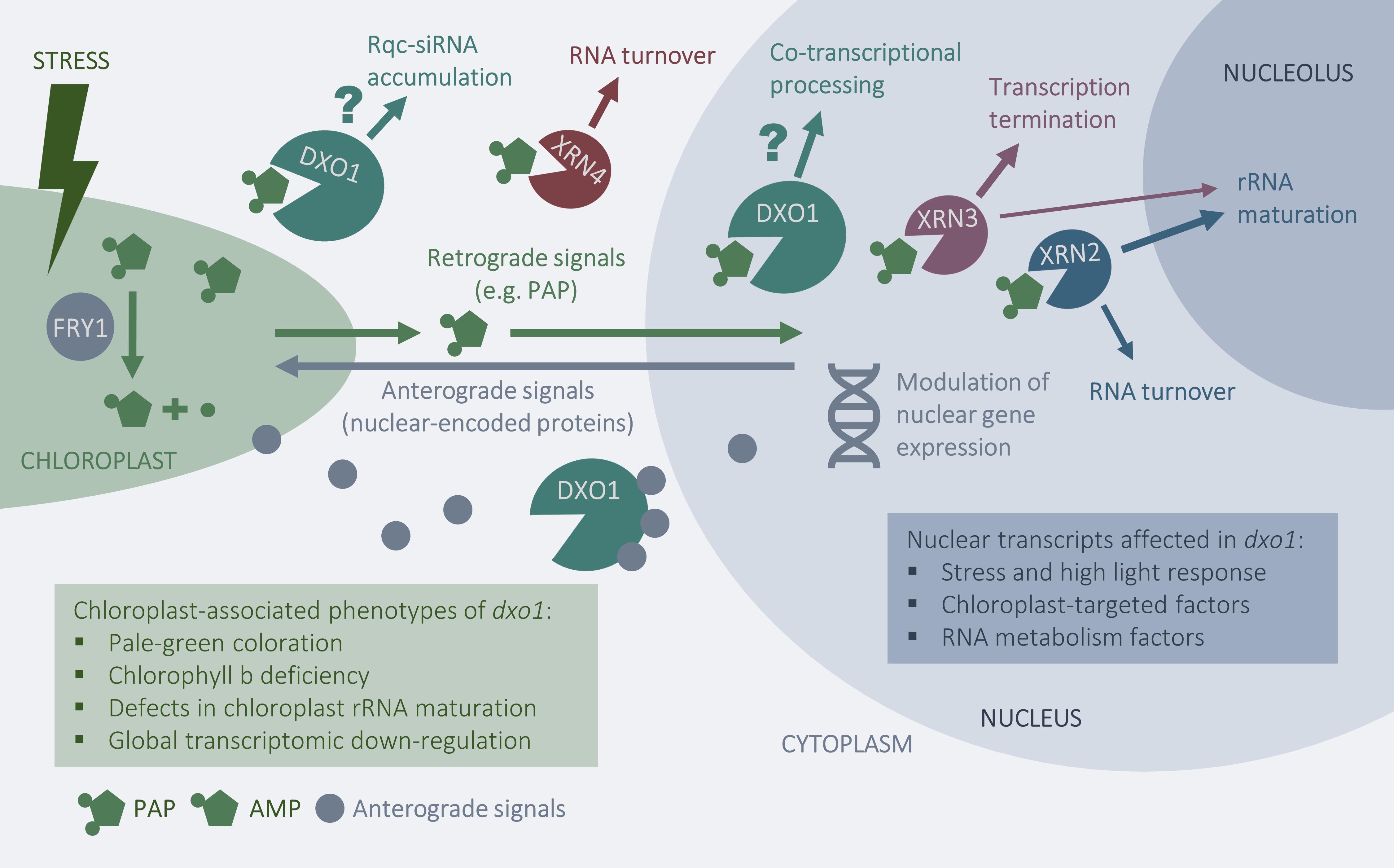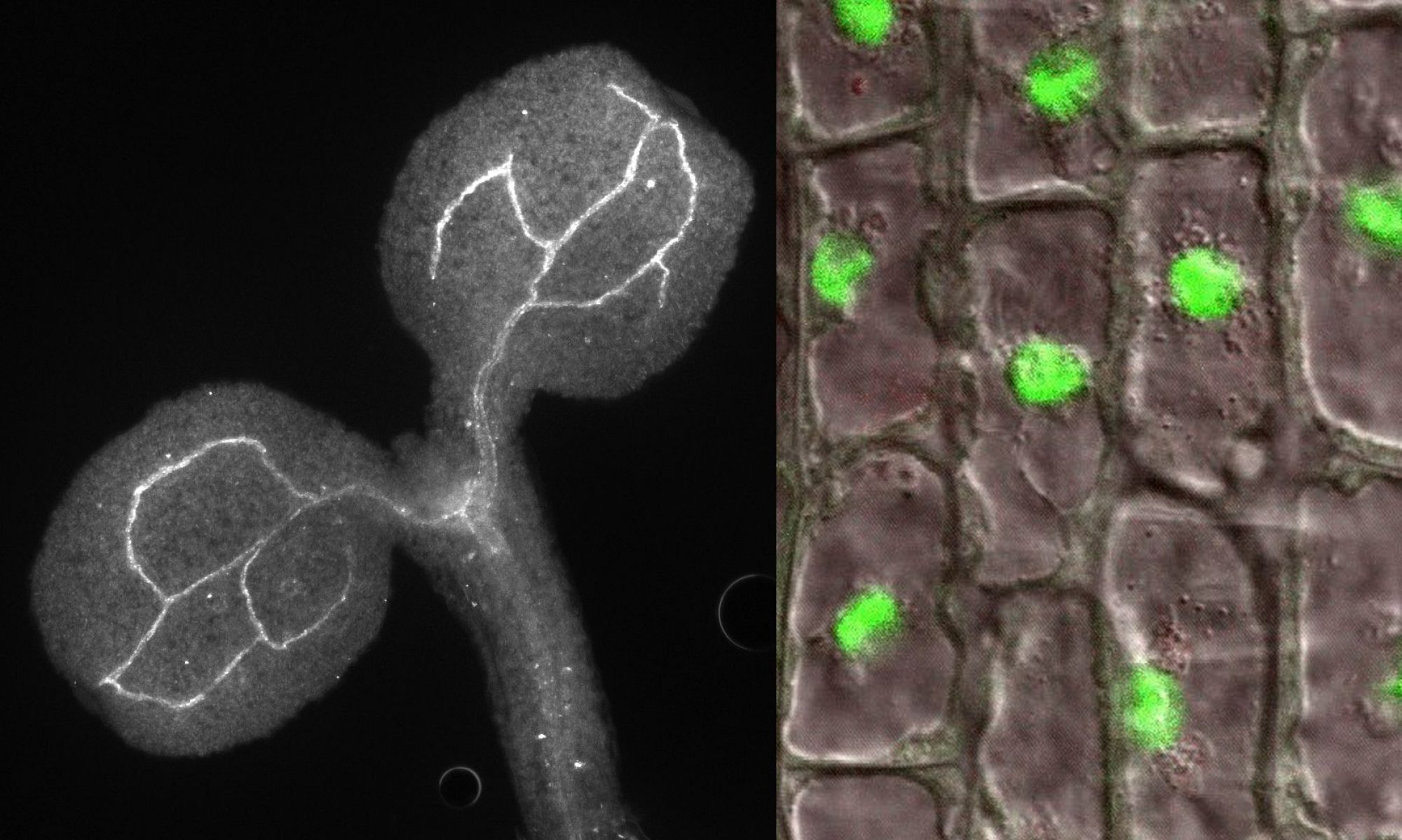Contribution of 5'-end RNA quality control to cellular processes in Arabidopsis thaliana
NCN 2014/15/B/NZ2/02302
DXO/Rai1 proteins participate in mRNA 5′-end quality control (5’QC), removal of non-canonical NAD cap (deNADding) and maturation of fungal ribosomal RNA (rRNA). Our recent research described the biochemical activity and physiological significance of the Arabidopsis thaliana DXO1. Detailed enzymatic assays showed that DXO1 has strong deNADding and weak 5′-3′ exoribonuclease activities. Other biochemical properties characteristic of DXO/Rai1 homologs are inhibited in plants due to the presence of a single amino acid modification within the active site. DXO1 also contains a large, plant-specific N-terminal extension (NTE) that negatively affects its biochemical properties and participates in RNA binding. In addition, enzymatic activity of DXO1 is inhibited by adenosine 3′, 5′-bisphosphate (PAP), which is a component of chloroplast-to-nucleus retrograde signaling and an inhibitor of XRN 5′-3′ exoribonucleases.
We demonstrated that the physiologically-relevant function of DXO1 is independent of its catalytic activity, but relies on the N-terminal extension. DXO1 knockdown leads to the NTE-dependent morphological and molecular aberrations that include severe growth retardation, pale-green coloration and accumulation of RDR6-dependent RNA quality control siRNAs (rqc-siRNAs). RNA sequencing data revealed that DXO1 deficiency phenocopies chloroplast-driven transcriptomic changes, but also affects RNA metabolism.
Functional implications of DXO1 biochemical activity remain unknown. Presumably, DXO1 parallelly acts in multiple processes, but its biochemical activity is redundant with other enzymes and eludes detection. Altogether, our work shows that DXO1 retains certain features of its fungal and mammalian homologs, but most prominently it evolved to perform a plant-specific role that is associated to chloroplast, but also affects nuclear gene expression, possibly through modulation of chloroplast-to-nucleus retrograde signaling.
Currently, we focus on the more detailed explanation of DXO1 function in a physiological context.


